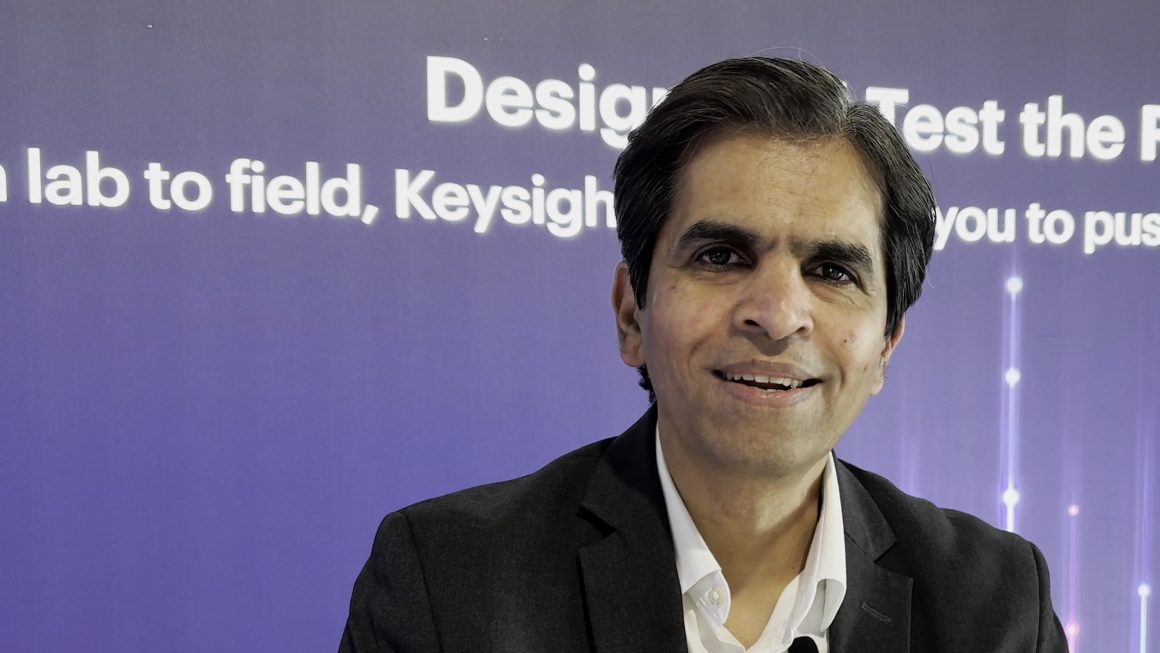TelcoForge had the chance to catch up with Kailash Narayanan, President of the Communication Solutions Group at Keysight Technologies, during the 6G Forge event in April.
In this interview, Narayanan shares his vision of a 6G network, addresses what the industry needs to do differently compared to 5G, and how Keysight is facilitating the path to the next generation of mobile connectivity.
Watch the video interview or read the write-up below:
To start, how do we define 6G?
When I think about 6G, I would define it with four Ds. It’s going to be dynamic, it’s going to be disaggregated, it’s going to be decentralised, and you have a very deeply intelligent network. And all of this means it needs to be software-centric, it needs to be 100% cloud-native and 100% AI-native, which means that all of these APIs and being open and facilitating interoperability across many players, this is going to be more crucial.
People that develop AI models for network functions, people that build hardware components, people that build traditional software stacks, all of these software components and hardware components have to come together with well-defined APIs. So I don’t see this being very different and separate from 6G. I think it’s just part of the whole network and industry moving towards a software-centric, AI-driven architecture.
What role does Keysight play in this evolution?
We at Keysight are facilitating this with a lot of tools to simulate, emulate, design prototype, all of these capabilities. We have a complete O-RAN suite, and we’ll build on top of that with suites and test solutions for non-terrestrial networks and going forward for 6G APIs as well.
Can work on 6G be separated from emerging technologies like AI-native and spectrum sharing?
The industry is actually starting to focus on technology pieces, as well as business model pieces. Clearly, it needs tools, right? And this is where the focus on digital twins, the focus on how AI would impact 6G, these types of analysis, simulation, and emulation are very critical.
Keysight has a complete wireless stack. We can simulate and emulate capabilities. We can emulate terrestrial networks, base stations and devices. We can emulate the channel. We can emulate space networks. Similarly, on the wireline side, we can emulate data centre networks, and we can emulate AI workloads and stuff and security threats and so on and so forth.
We have the most complete wireless and wireline, compute, and connectivity stacks. And these tools are much needed for the industry to have this conversation about 6G technology development, as well as use cases and services development. We say we can actually build a mock 6G network and deploy a 6G service.
What improvements to the 6G development process do you think should be made compared to 5G?
Would we do something different for the 6G development process relative to 5G? You know, with 5G, we focused a lot on the technology.
We sort of took the business models for granted and the business benefits for granted. You know, we focused on, you know, high data throughput, but we focused on massive IoT, machine-to-machine communications and low latency. And it was almost a given, or people assumed that the business models would follow.
I think if there’s one thing that I would encourage and recommend, and I’m actually excited that the industry is doing this, is there is a focus on technology, intense focus on technology, but in addition, so we’re talking about integrated communications and sensing, we’re talking about AI-driven networks, we’re talking about FR3 bands, we’re talking about RIS, sub-terahertz.
But in parallel, we’re also talking about what the use cases for things like sub-terahertz are. What are the use cases for things like reflective intelligence services? Who is going to benefit? What’s the business model? So the business model discussion is occurring in parallel to the technology development process, and I would continue to encourage that.
Hardware, software, and AI are evolving at different rates. Are we equipped to work across all three?
There are obviously going to be new tools and new capabilities that are going to get required. I mean, even simple things like, how do you mimic industrial automation? How do you make sure that robotics is going to work in a connected, computer-intensive environment? How will collaboration occur between robots?
These will require new tools. I mean, you’re going to need a lot more simulation and emulation capabilities with synthetic data. So you may not have real-world data, but the models have to be built with synthetic data, but that synthetic data has to be very accurate and represent the real world.
So there will be new tools that are going to be required, and this is Keysight’s pursuit in terms of intercepting the market sooner and engaging with our leading industry partners and academic and other alliances sooner in the cycle to drive the right insights and enable them with these new capabilities around digital twins, ability to emulate robots, AI workloads, and so forth.




